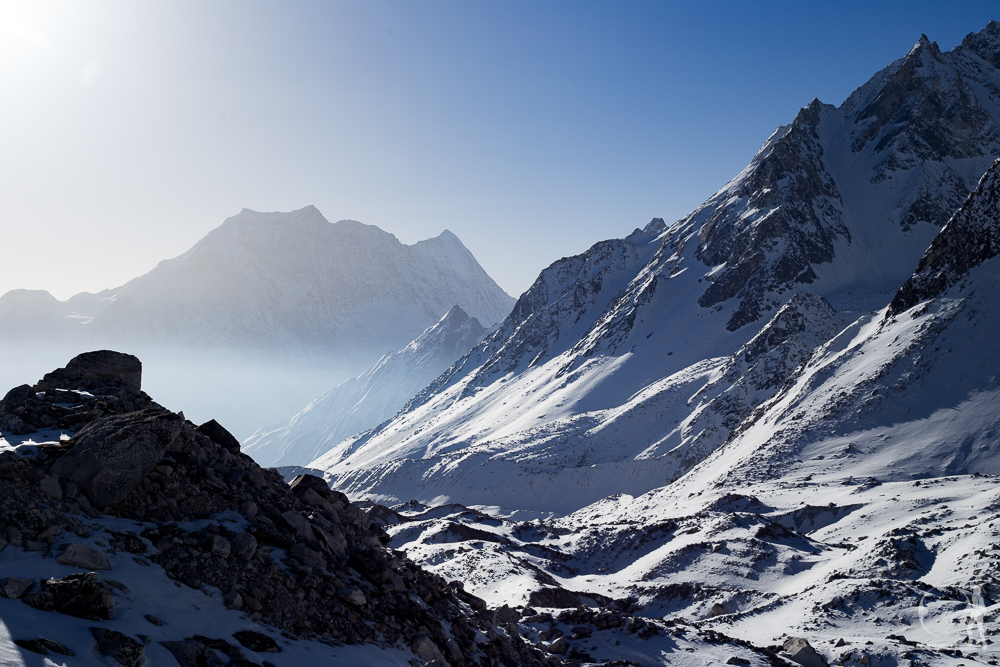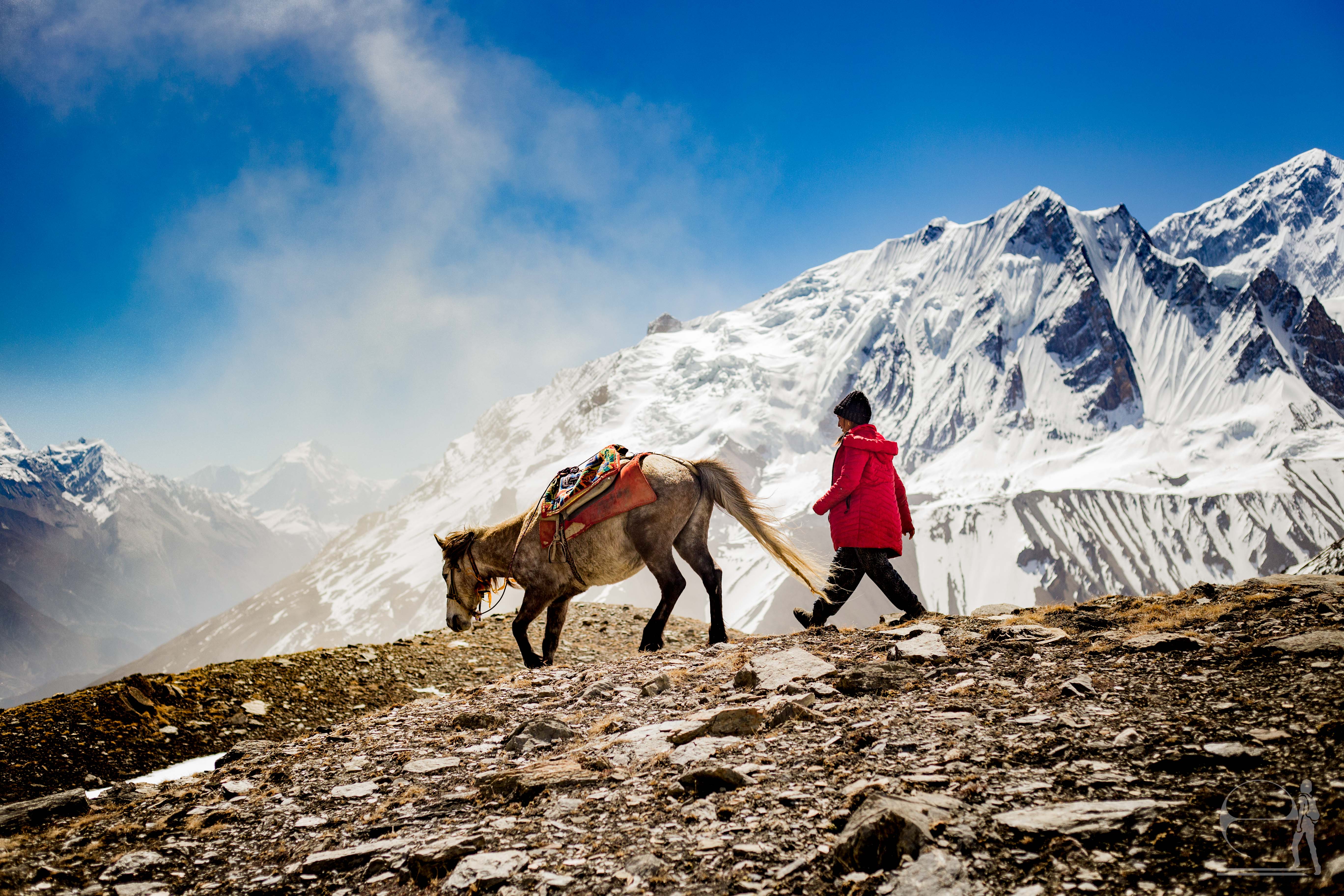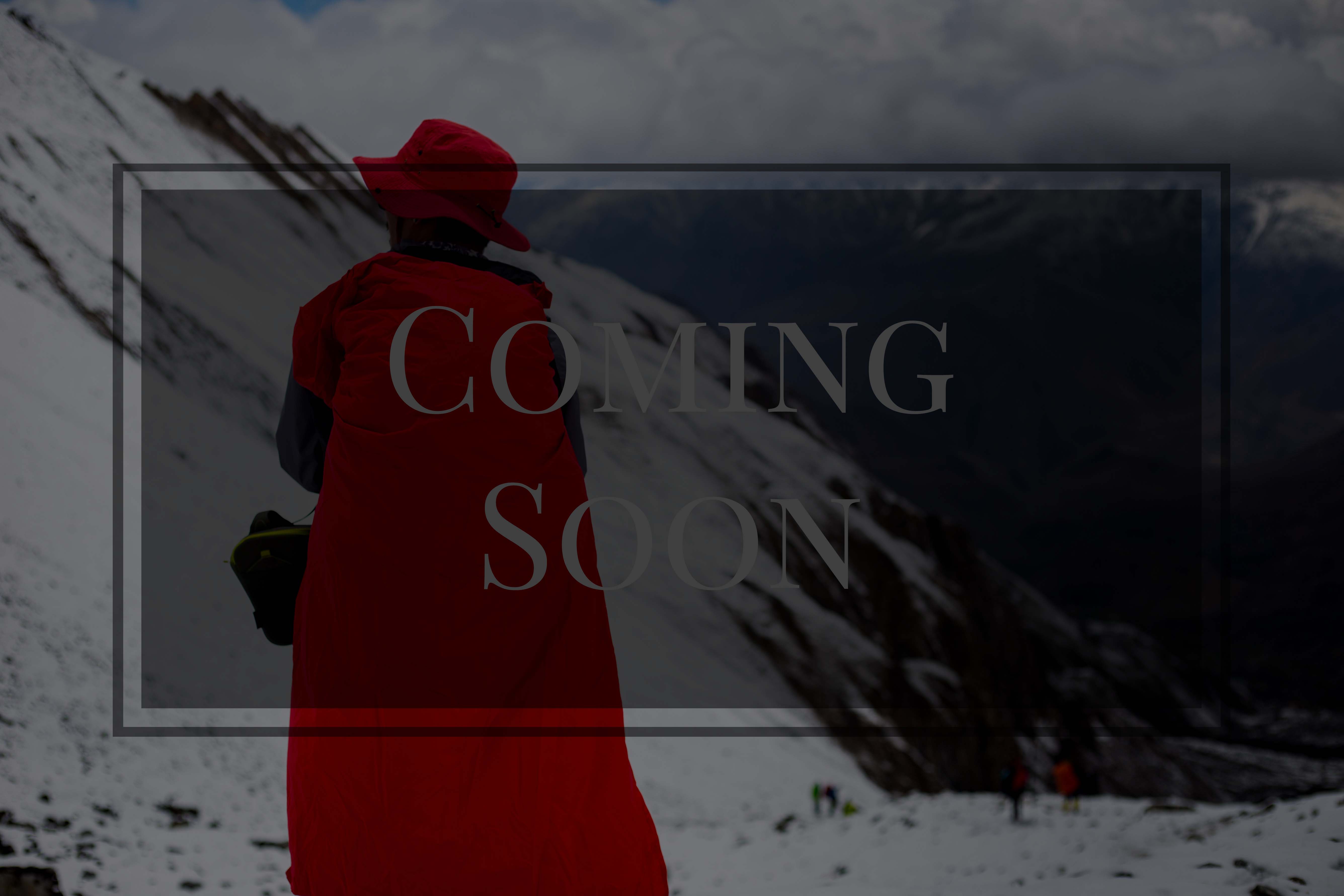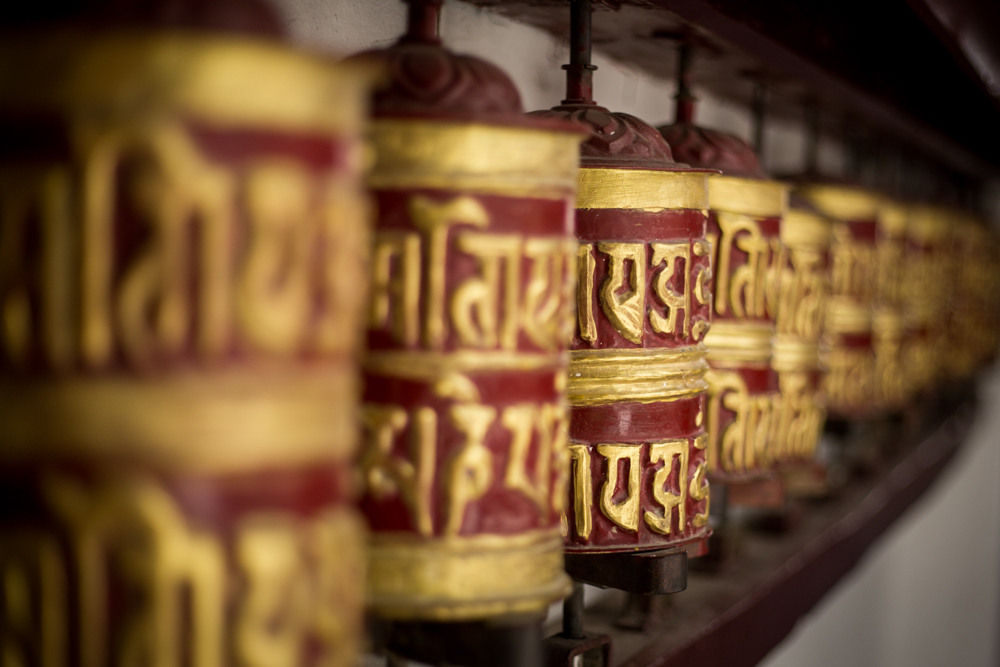/ What’s in my bag?
Think like a trekker

Assess the terrain, weather, and accommodation.
No two treks will ever be the same. Ask any Nepali guide: while there are general things you can expect to stay the same for each trekking route, natural and manmade forces will change a route over time.
My packing list is constantly changing, based on the type of terrain, weather, and accommodation I expect on a trek. There is a general list of gear I select from, but below are some questions I ask myself to customize my packing.
Terrain
What kind of terrain will you be walking on? For example, are you expecting mostly mud or dirt tracks at the lower elevations (below 3000m)? At the higher elevations, how much snow do you expect? Will there be ice? If you are tackling a high pass, how steep or “technical” is the descent?
The type of terrain will mostly affect your footwear as well as the type of traction you bring.
Weather
What season are you trekking in? Peak trekking season is mid-September through mid-November, with gorgeous weather, little rainfall, and a temperate climate. A second peak season is from mid-March through May, starting with slightly colder, drier conditions easing into gorgeous weather with little rainfall. May through August gets increasingly rainier: expect warmer weather but accompanied by heavy rainfall in monsoon season. Mid-November to mid-March gets steadily colder, with more snow and ice conditions.
While weather mostly affects your clothing choices, it can also affect decisions concerning your sleep system, rain gear, footwear, and traction.
Accommodation

What kind of lodging and food can you expect on the trek? Many of the treks in Nepal are “teahouse treks”. This you will be walking from guesthouse to guesthouse and stopping for your meals with minimal, if any, camping. My packing list does not account for camping treks.
For teahouse treks, you do not have to bring shelter or carry food. However, different regions vary in the kinds of amenities the teahouses offer. Sometimes, guesthouses can be quite drafty and let in the outside snow. On other treks, you can expect toastier accommodations and even baked goods like apple pie. Some places offer charging stations for your electronics, others do not.
The type of accommodation will mostly affect your sleep system decisions, how much food you carry, and how you keep your devices charged.
How big should my bag be?
Before we dive into what’s in the bag, let’s talk about The Bag. A 30-40L bag should be enough for any trek in which you do not have to carry camping equipment or food. In fact, I make it a rule that if it doesn’t fit into my bag, I don’t need it.
If it doesn’t fit into my bag, I don’t need it.
I’ve used the Gregory Jade 38L women’s bag in a size small for all of my treks except for when I did Ghorepani/Poon Hill. On this trek, I’d packed a really light bag of about 6 kg (including 1 kg for water and .9 kg for my DSLR). I’d convinced my cousin to join me for her first trek and her bag was about 7-8 kg (including 1 kg for water). So I switched our bags, taking both water bottles and asking our guide, Lama Sanu, to carry my camera.
For my American friends, 1 kg = 2.2 lbs. 6 kg is 13.2 lbs and 8 kg is 17.6 lbs.
Moral of the story: weight matters.




